解题思路:
在本文中,“数组中出现次数超过一半的数字” 被称为 “众数” 。
需要注意的是,数学中众数的定义为 “数组中出现次数最多的数字” ,与本文定义不同。
本题常见的三种解法:
- 哈希表统计法: 遍历数组
nums,用 HashMap 统计各数字的数量,即可找出 众数 。此方法时间和空间复杂度均为 $O(N)$ 。 - 数组排序法: 将数组
nums排序,数组中点的元素 一定为众数。 - 摩尔投票法: 核心理念为 票数正负抵消 。此方法时间和空间复杂度分别为 $O(N)$ 和 $O(1)$ ,为本题的最佳解法。
摩尔投票:
设输入数组
nums的众数为 $x$ ,数组长度为 $n$ 。
推论一: 若记 众数 的票数为 $+1$ ,非众数 的票数为 $-1$ ,则一定有所有数字的 票数和 $> 0$ 。
推论二: 若数组的前 $a$ 个数字的 票数和 $= 0$ ,则 数组剩余 $(n-a)$ 个数字的 票数和一定仍 $>0$ ,即后 $(n-a)$ 个数字的 众数仍为 $x$ 。
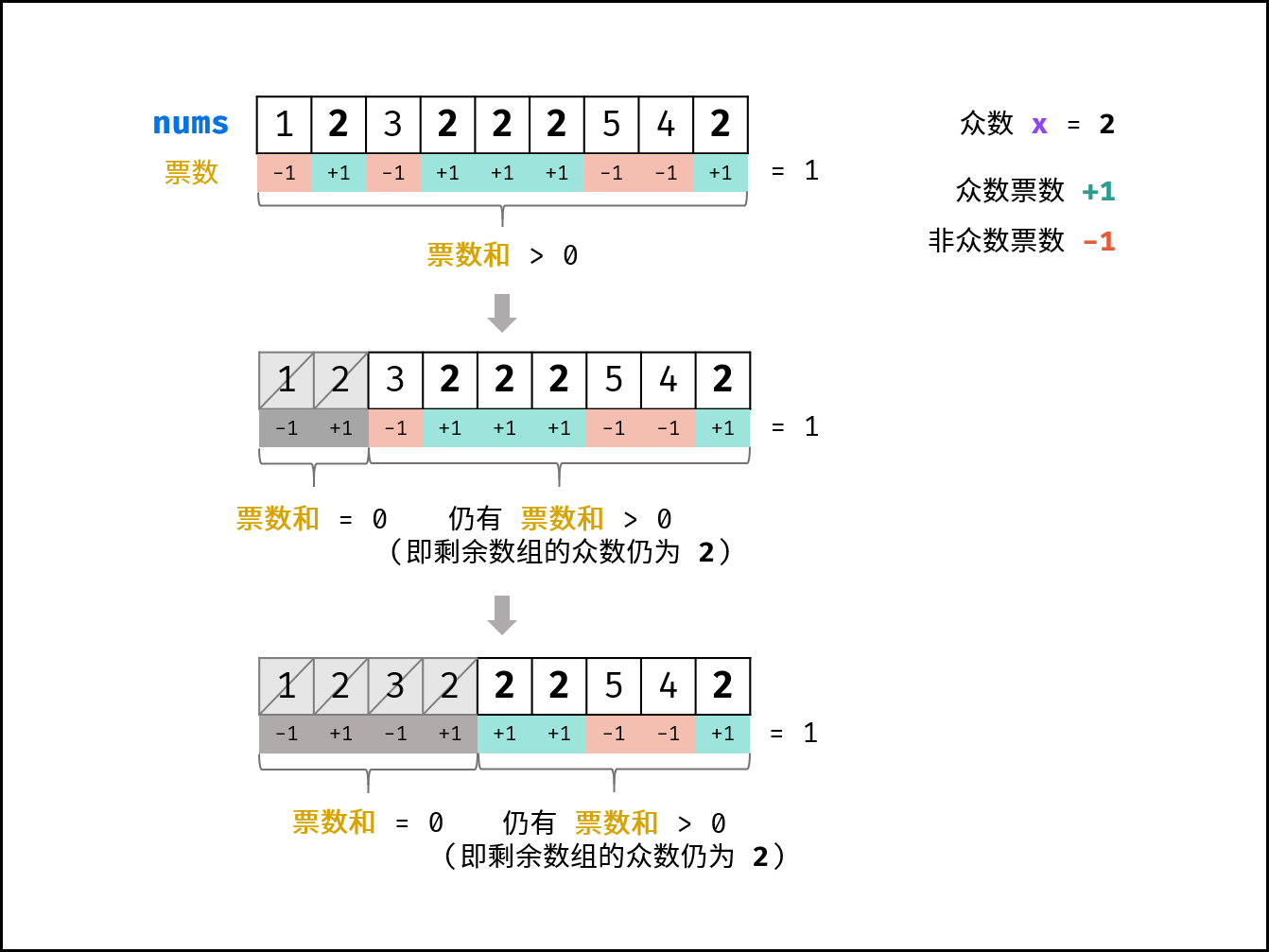
根据以上推论,记数组首个元素为 $n_1$ ,众数为 $x$ ,遍历并统计票数。当发生 票数和 $= 0$ 时,剩余数组的众数一定不变 ,这是由于:
- 当 $n_1 = x$ : 抵消的所有数字中,有一半是众数 $x$ 。
- 当 $n_1 \neq x$ : 抵消的所有数字中,众数 $x$ 的数量最少为 0 个,最多为一半。
利用此特性,每轮假设发生 票数和 $= 0$ 都可以 缩小剩余数组区间 。当遍历完成时,最后一轮假设的数字即为众数。
算法流程:
- 初始化: 票数统计
votes = 0, 众数x。 - 循环: 遍历数组
nums中的每个数字num。- 当 票数
votes等于 0 ,则假设当前数字num是众数。 - 当
num = x时,票数votes自增 1 ;当num != x时,票数votes自减 1 。
- 当 票数
- 返回值: 返回
x即可。
<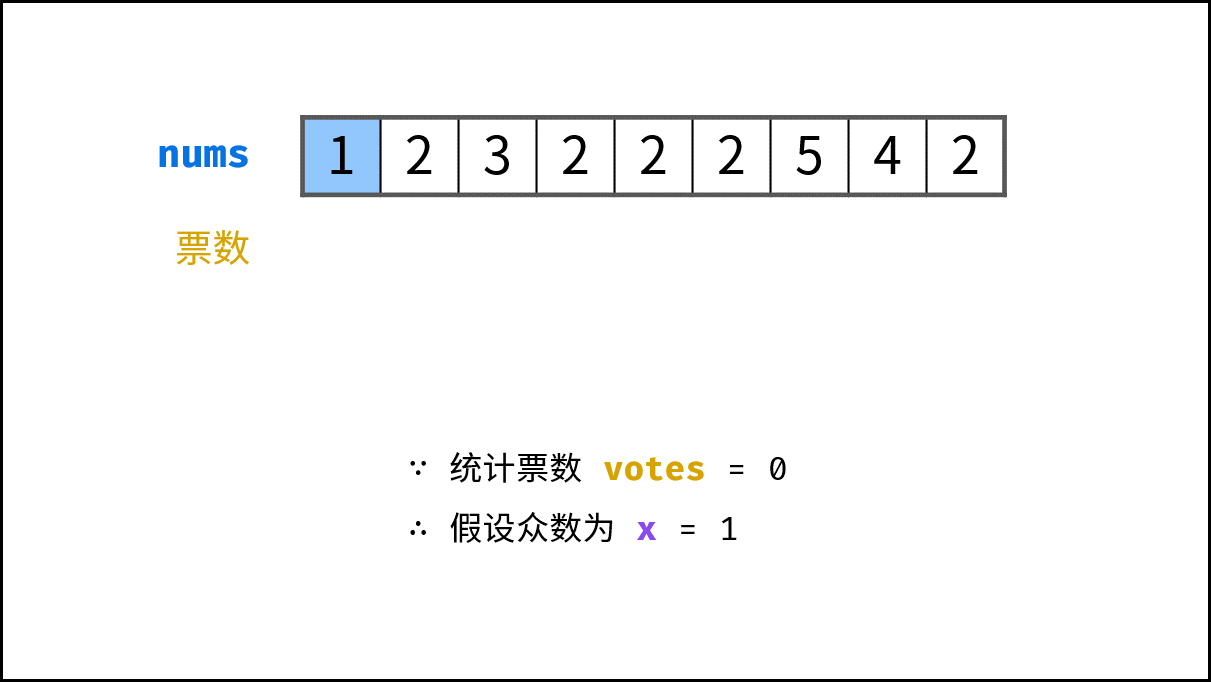 ,
,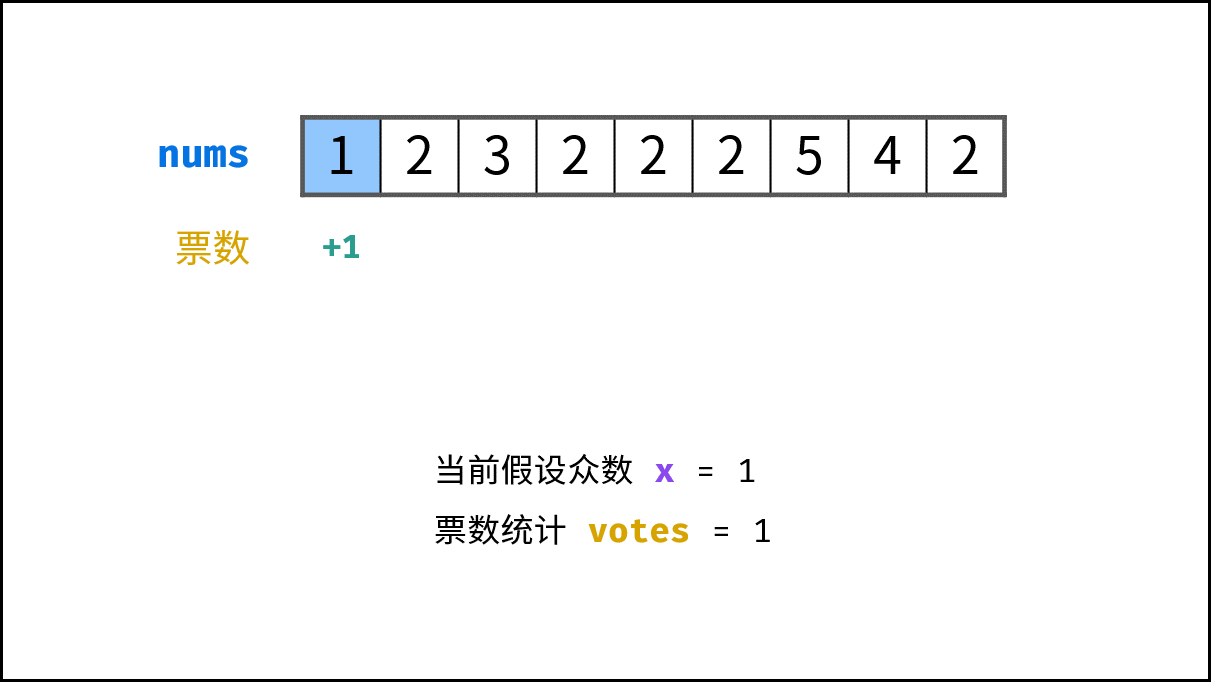 ,
,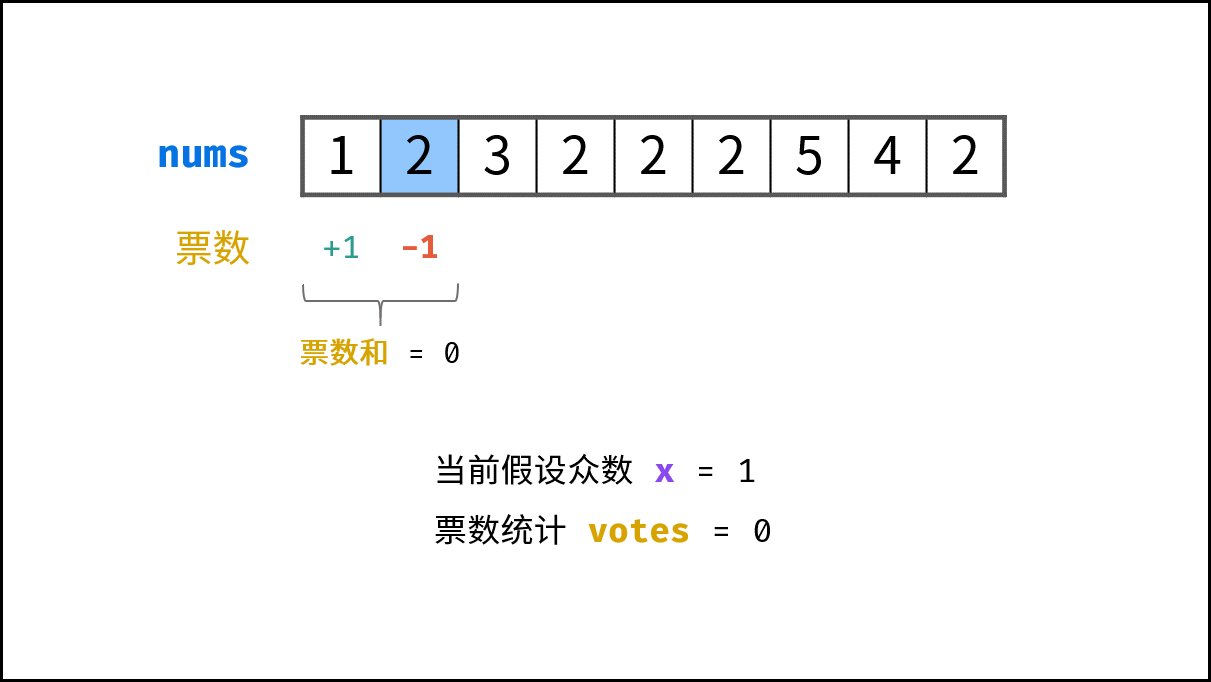 ,
,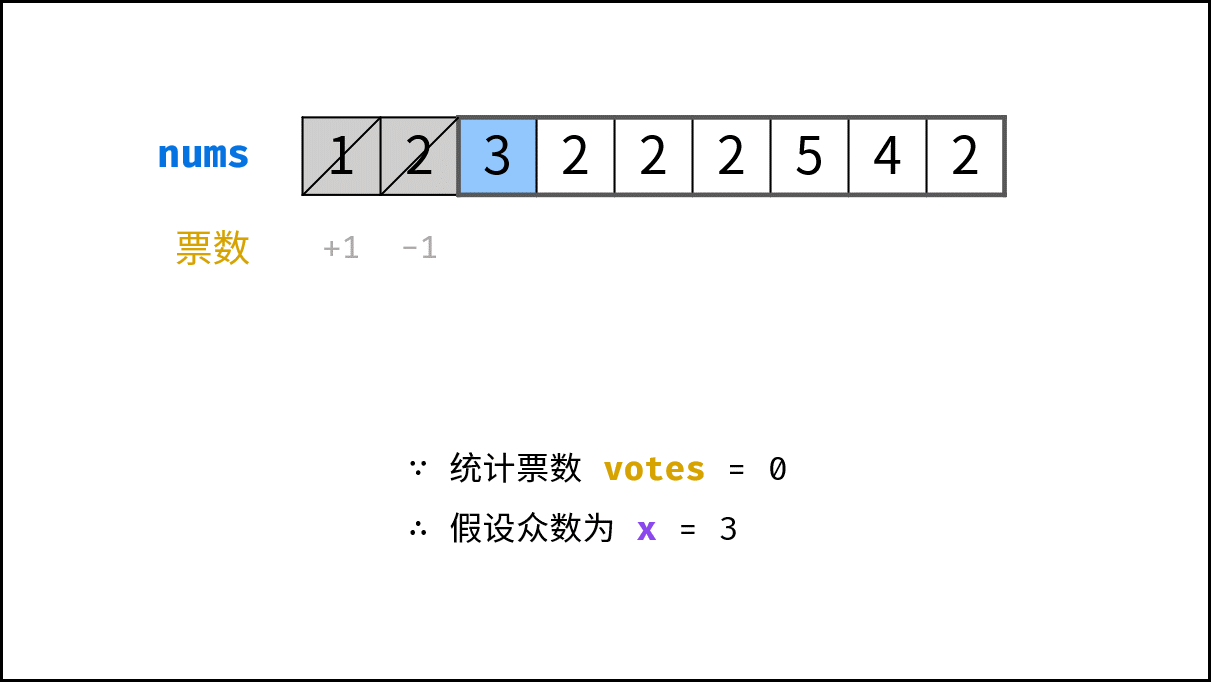 ,
,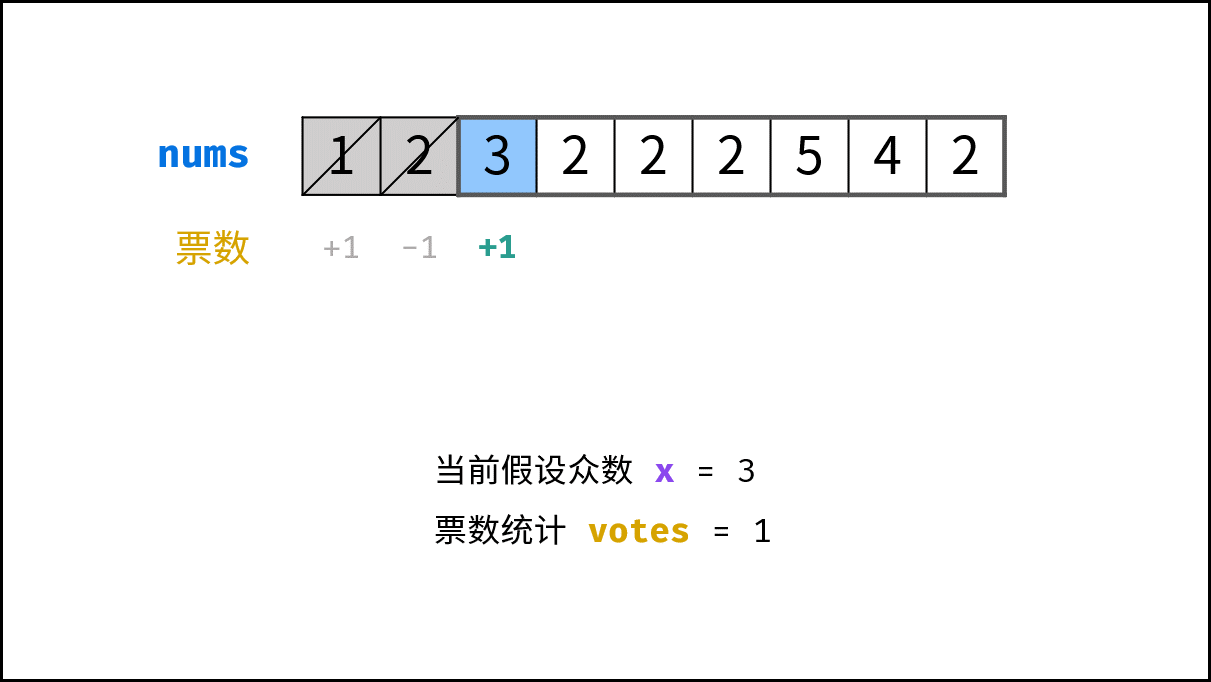 ,
,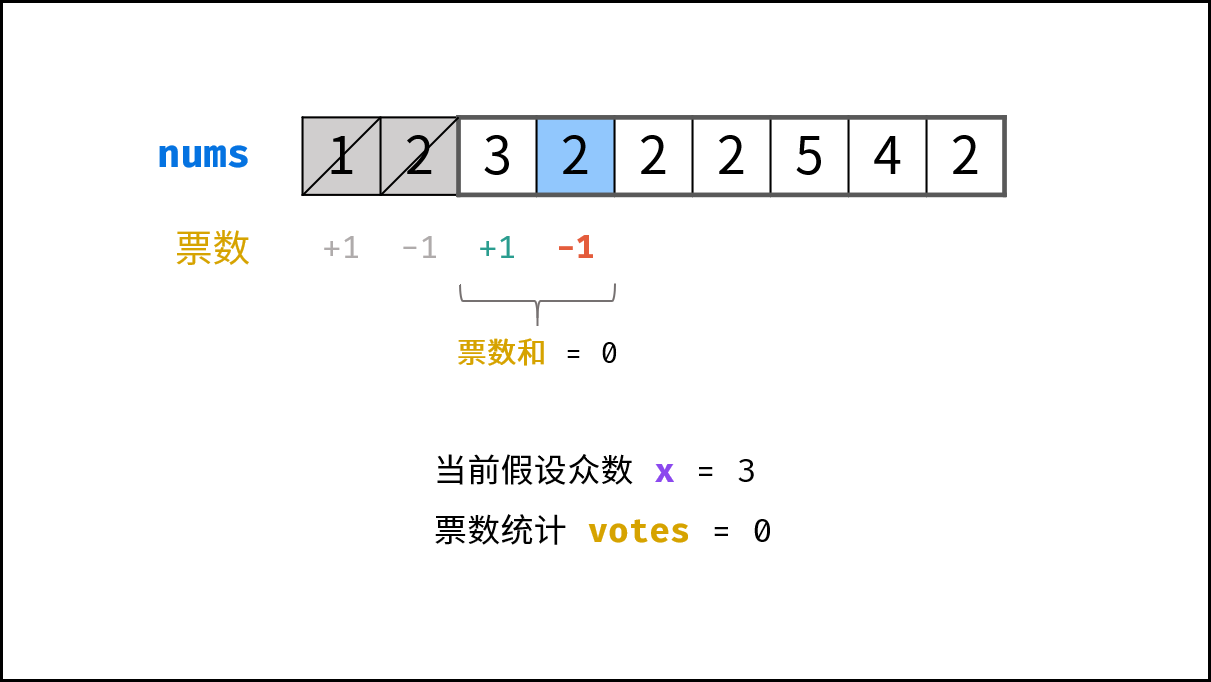 ,
,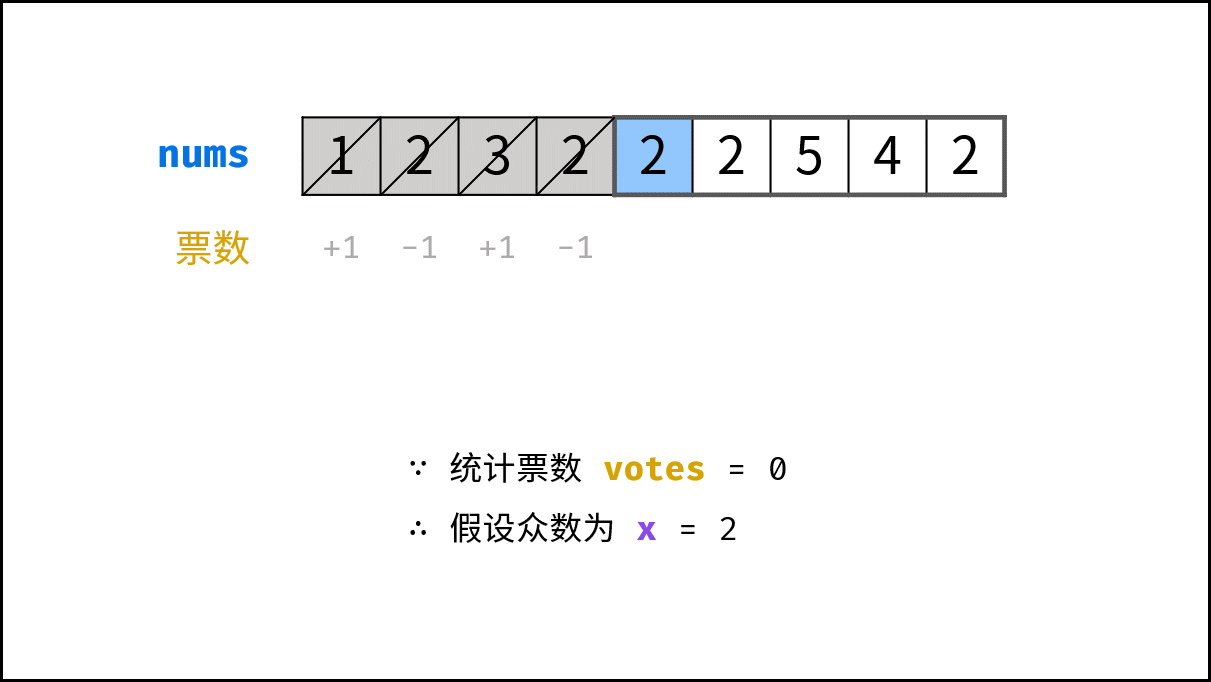 ,
,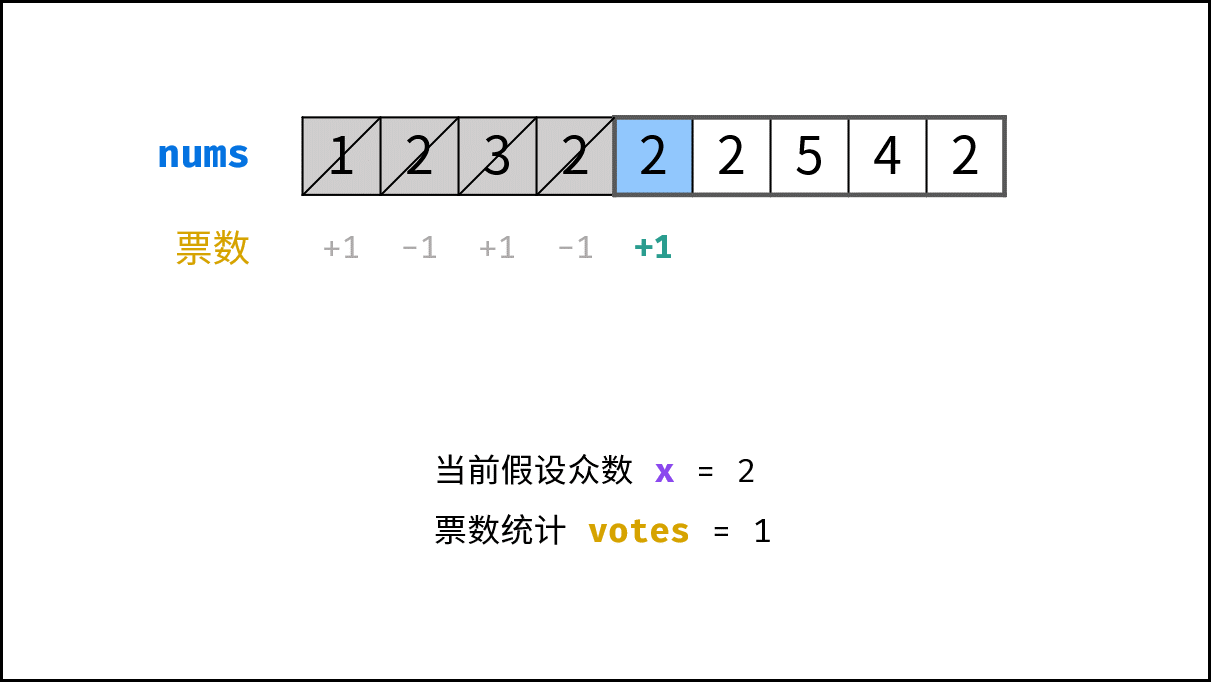 ,
,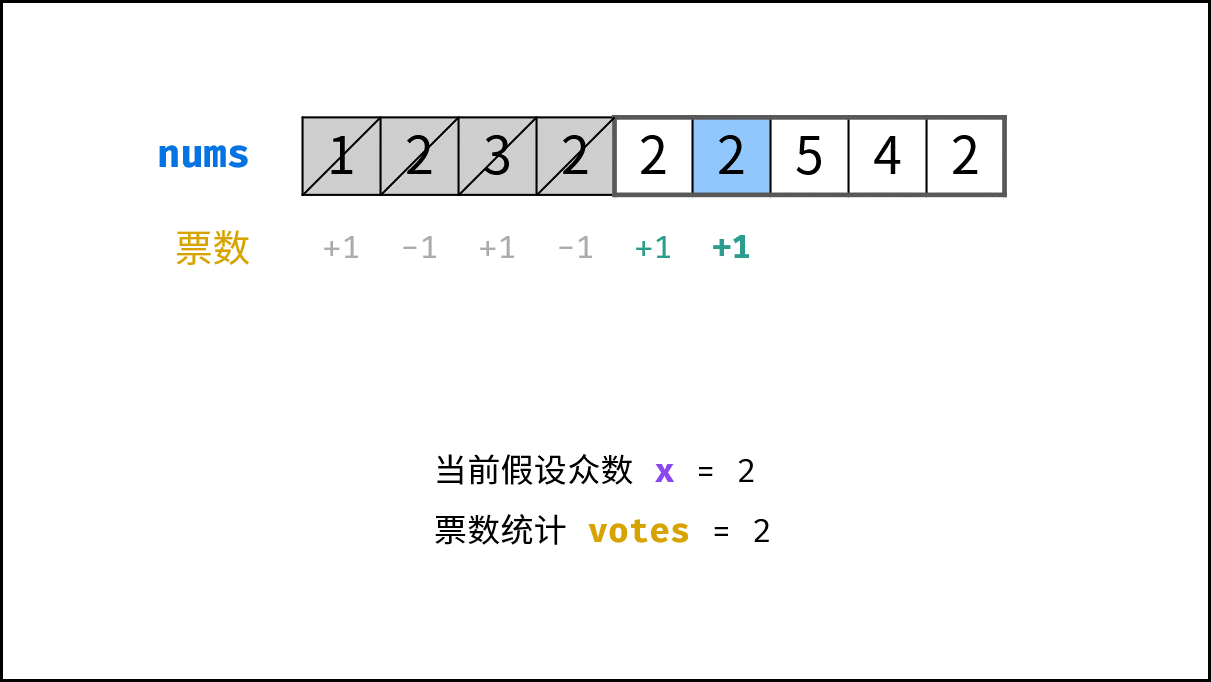 ,
,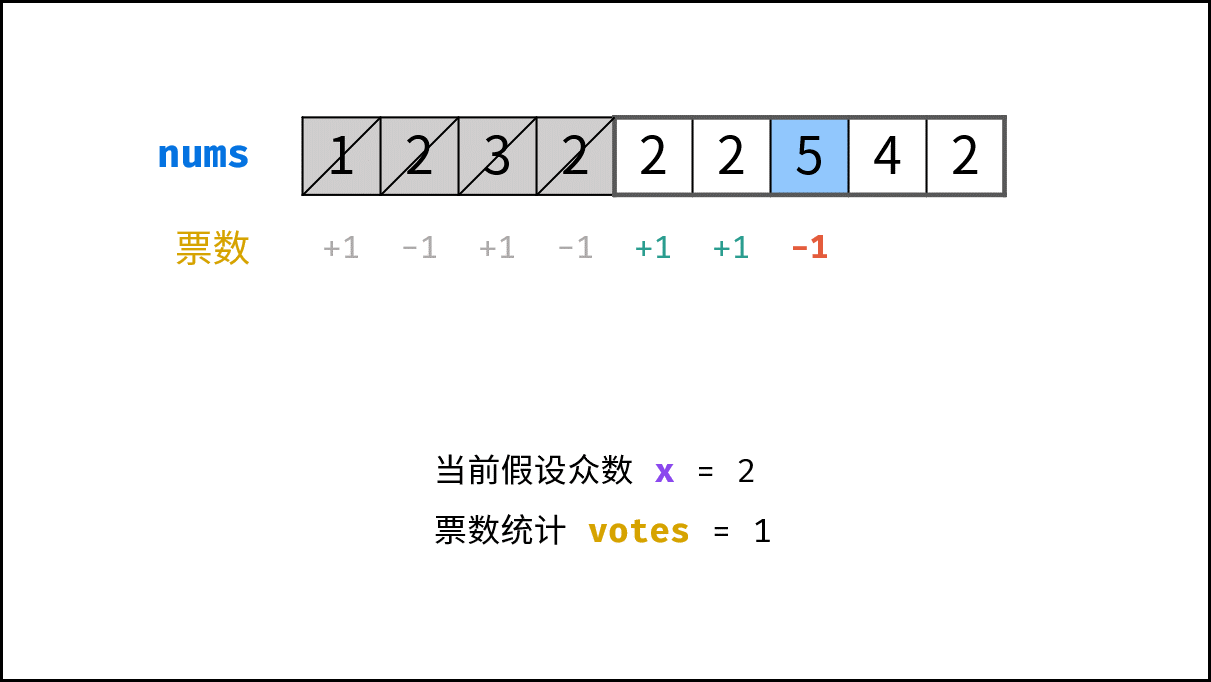 ,
,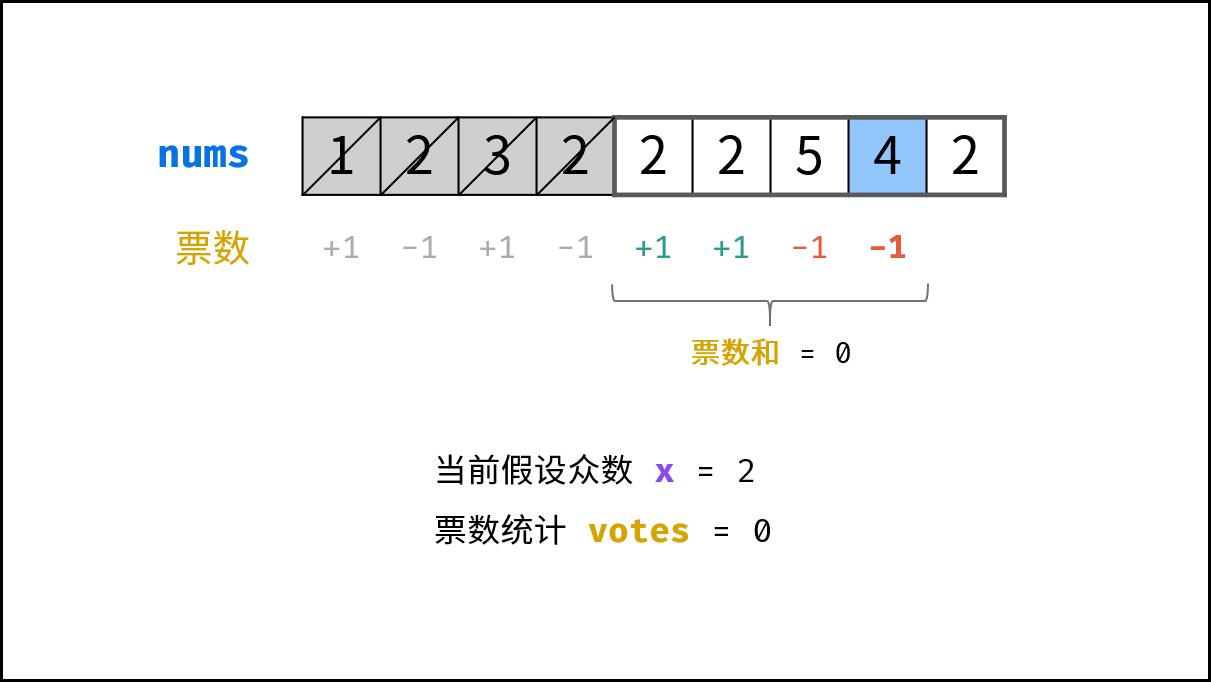 ,
,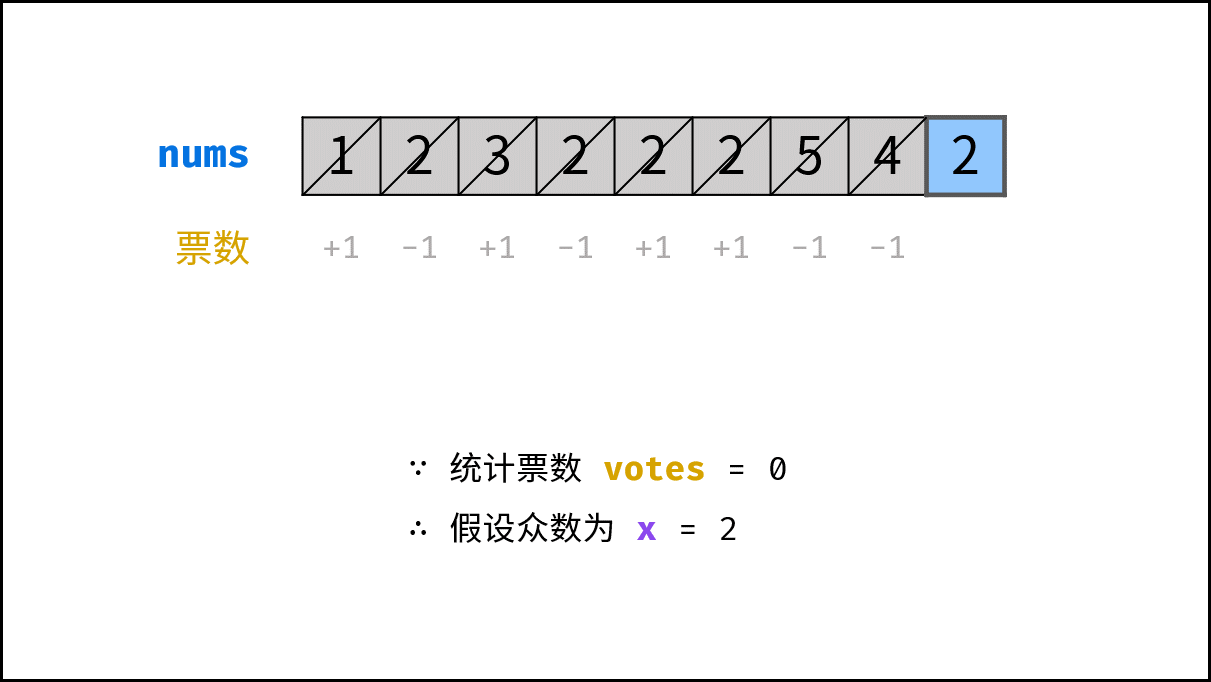 ,
,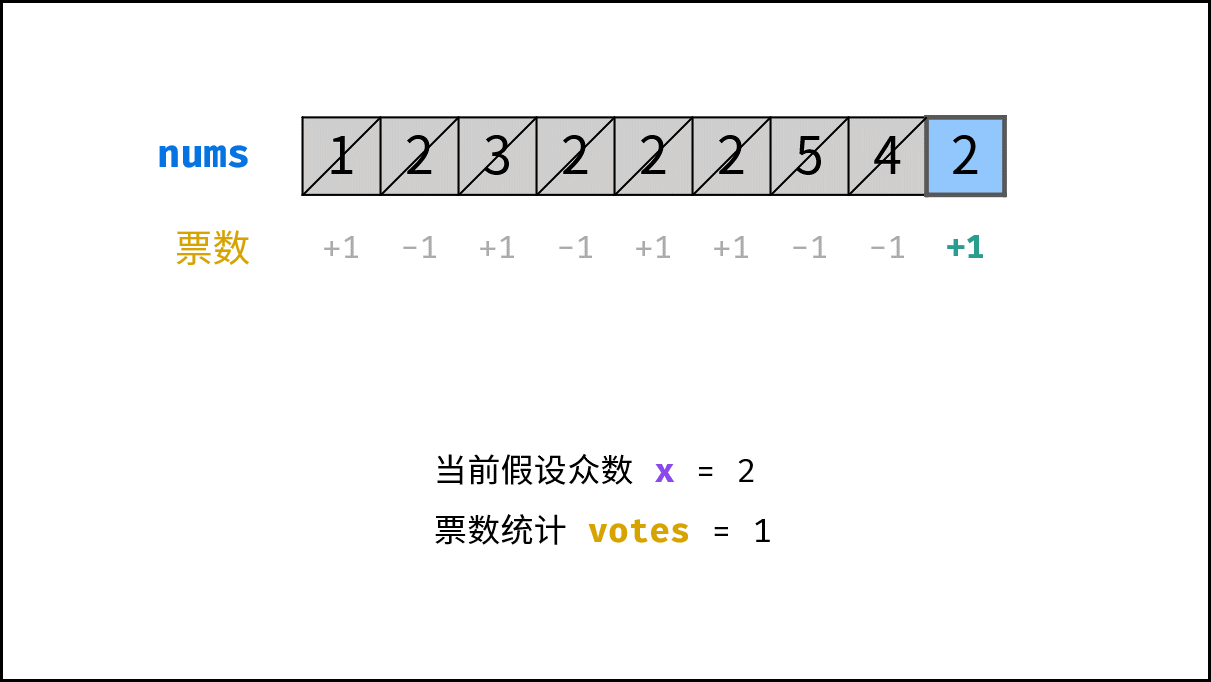 ,
,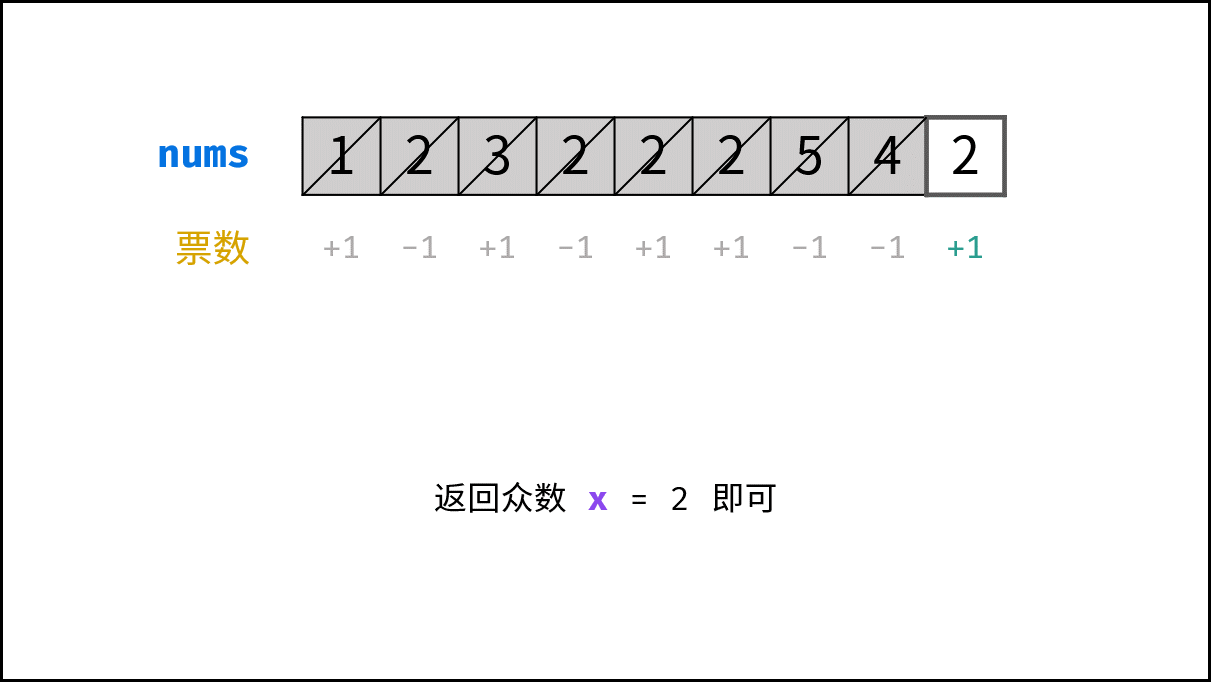 >
>
代码:
Python
class Solution:
def majorityElement(self, nums: List[int]) -> int:
votes = 0
for num in nums:
if votes == 0: x = num
votes += 1 if num == x else -1
return xJava
class Solution {
public int majorityElement(int[] nums) {
int x = 0, votes = 0;
for (int num : nums){
if (votes == 0) x = num;
votes += num == x ? 1 : -1;
}
return x;
}
}C++
class Solution {
public:
int majorityElement(vector<int>& nums) {
int x = 0, votes = 0;
for (int num : nums){
if (votes == 0) x = num;
votes += num == x ? 1 : -1;
}
return x;
}
};复杂度分析:
- 时间复杂度 $O(N)$ : $N$ 为数组
nums长度。 - 空间复杂度 $O(1)$ :
votes变量使用常数大小的额外空间。
拓展:
由于题目说明“给定的数组总是存在多数元素”,因此本题不用考虑 数组不存在众数 的情况。若考虑,需要加入一个 “验证环节” ,遍历数组 nums 统计 x 的数量。
- 若
x的数量超过数组长度一半,则返回x。 - 否则,返回未找到众数。
Python
class Solution:
def majorityElement(self, nums: List[int]) -> int:
votes, count = 0, 0
for num in nums:
if votes == 0: x = num
votes += 1 if num == x else -1
# 验证 x 是否为众数
for num in nums:
if num == x: count += 1
return x if count > len(nums) // 2 else 0 # 当无众数时返回 0Java
class Solution {
public int majorityElement(int[] nums) {
int x = 0, votes = 0, count = 0;
for (int num : nums){
if (votes == 0) x = num;
votes += num == x ? 1 : -1;
}
// 验证 x 是否为众数
for (int num : nums)
if (num == x) count++;
return count > nums.length / 2 ? x : 0; // 当无众数时返回 0
}
}C++
class Solution {
public:
int majorityElement(vector<int>& nums) {
int x = 0, votes = 0, count = 0;
for (int num : nums){
if (votes == 0) x = num;
votes += num == x ? 1 : -1;
}
// 验证 x 是否为众数
for (int num : nums)
if (num == x) count++;
return count > nums.size() / 2 ? x : 0; // 当无众数时返回 0
}
};时间复杂度和空间复杂度都不变,仍为 $O(N)$ 和 $O(1)$ 。